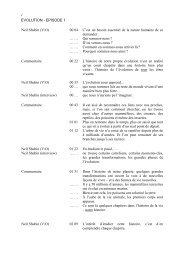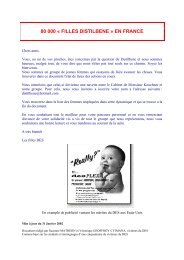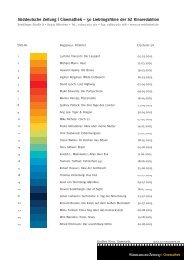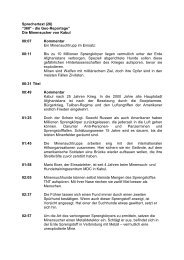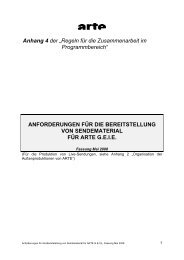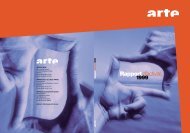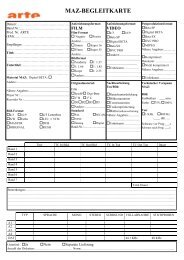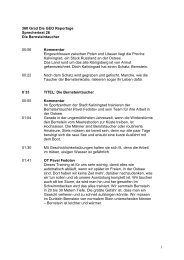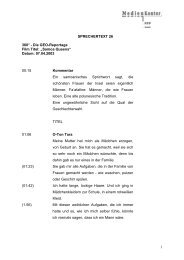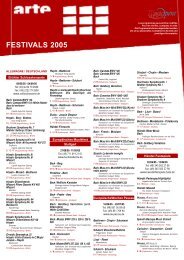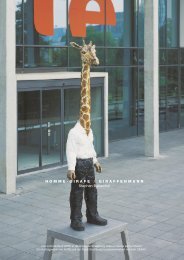POPs IN AFRICA HAZARDOUS WASTE TRADE 1980 - 2000 ... - Arte
POPs IN AFRICA HAZARDOUS WASTE TRADE 1980 - 2000 ... - Arte
POPs IN AFRICA HAZARDOUS WASTE TRADE 1980 - 2000 ... - Arte
You also want an ePaper? Increase the reach of your titles
YUMPU automatically turns print PDFs into web optimized ePapers that Google loves.
Namibia, which achieved independence on March 21, 1990, now<br />
belongs to the ACP countries which have banned all hazardous<br />
waste imports to their countries under the Lomé IV treaty. In<br />
addition, Namibia has gained membership to the Organization of<br />
African Unity. As a member of these two international fora,<br />
Namibia will join their respective prohibitions on the import of<br />
toxic and nuclear wastes. 142 In fact, Namibia's constitution states<br />
that “... the government shall provide measures against the<br />
dumping or recycling of foreign nuclear and toxic waste on<br />
Namibian territory.” 143<br />
On April 20 1994, Namibia and Germany signed a bilateral<br />
agreement to ship hazardous waste from Namibia to Germany,<br />
but not the other way round. The Namibian Minister of Trade and<br />
Industry, Hidipo Hamutenya, subsequently expressed in an<br />
interview his interest in obtaining certain secondary raw material<br />
from Germany in the future. 144<br />
Around October 1, 1994 a German Journalist, Sigrid Nielssen,<br />
was found dead in Windhoek. Nielssen (see also Scheme “Weser<br />
Zink”) had been on a research tour on imports of nuclear and<br />
hazardous waste to Namibia. Authorities said no documents<br />
were found with the body and Nielssen obviously died of a heart<br />
attack. 145 Neither the German FBI (BKA) nor the German<br />
Foreign Office knew anything about Nielssen´s death in October<br />
1994<br />
In a meeting of various political parties on 27 January, 1995,<br />
Prime Minister Hage Geingob proposed that members of the<br />
National Assembly establish a Standing Committee which was to<br />
immediately investigate allegations made by ANC´s Peter<br />
Kayser. Kayser made allegations during his contribution to a<br />
debate on Namibia’s accession to the Basel Convention that a<br />
senior government person was involved in plans to dump waste<br />
in Namibia. Allegations and rumors about toxic waste dumping<br />
have been circulating since independence. 146<br />
On October 8, 1992, in a TV broadcast on Germany´s ZDF<br />
channel, unknown material in the desert of Namibia was shown.<br />
A Geigercounter suggested radioactivity. The reporter said the<br />
material might be from the former East German uranium<br />
company Wismut, but no evidence was put forward. Later,<br />
Greenpeace virtually excluded Wismut from its investigations.<br />
The wastes were more likely to have come from East German<br />
copper smelters or even be Namibian uranium of “natural<br />
142<br />
Reuters News Reports, February 25, 1990.<br />
143<br />
Environment Matters, June, 1990, 10/15.<br />
144<br />
“Vereinbarung mit Deutschland unterzeichnet,” Sigrid Nielssen,Tempo, 5th June 1994;<br />
Greenpeace German has a copy of the document.<br />
145<br />
Chris Albertyn, Earthlife Afrika, in a conversation with Greenpeace, 4.10.1995<br />
146<br />
“NA toxic probe to be launched today,” Chris Ndivanga, The Namibian, Jan.30,1995<br />
73



